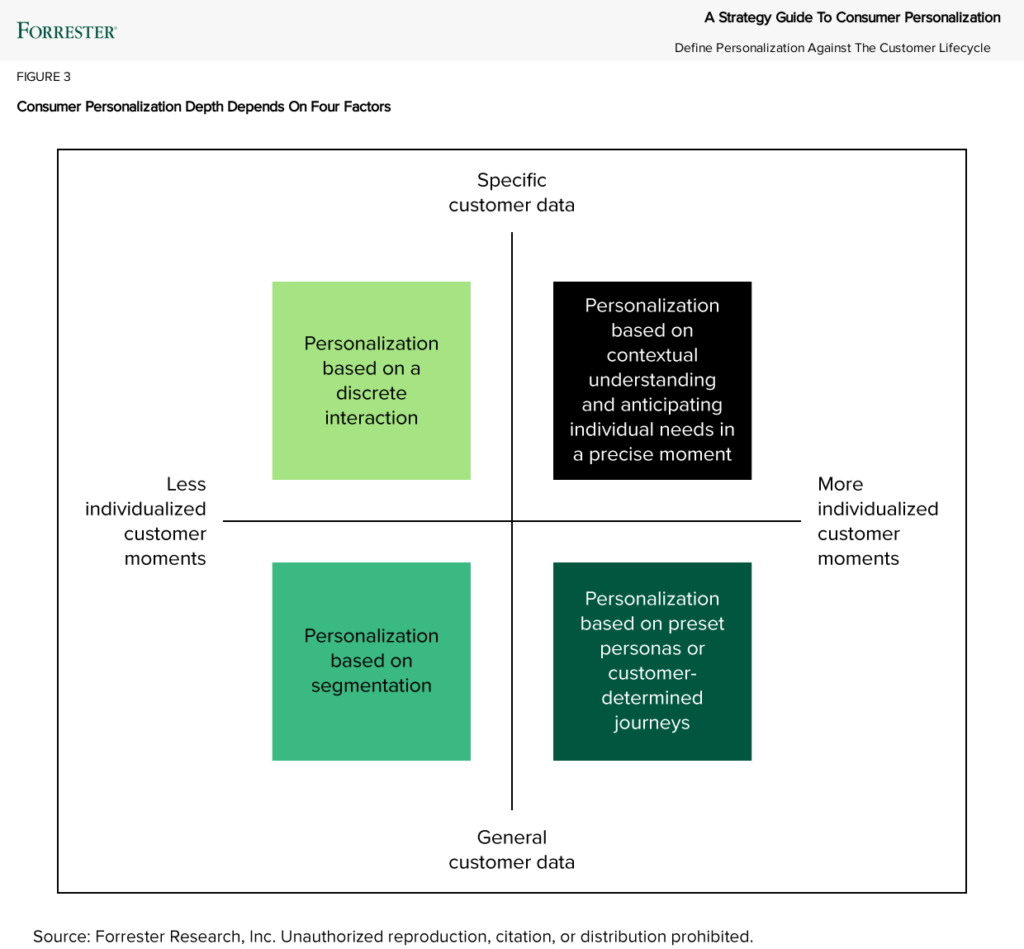Invisible Experiences Are The Endgame For Consumer Personalization
“To personalize or not to personalize?” That is the question today.
The answer tomorrow is that you won’t need to consciously think about personalizing individual consumer interactions, because companies will graduate to delivering invisible experiences (formerly called anticipatory experiences in our research).* Invisible experiences are when companies anticipate and respond to customer needs, manifesting in proactively delivered, seamless, and unobtrusive interactions that provide information, assistance, and services. Companies will ultimately move into the top-right corner of this quadrant depicting the four depths of consumer personalization:

Envision your website/app becoming obsolete because consumers and customers don’t need to visit your company’s properties. Instead, you go to the consumers and customers before they know or realize that they need something. It’s the difference between Tony Stark asking his Jarvis AI system to repair his Iron Man suit vs. Jarvis informing an oblivious Tony Stark that his suit is damaged and preemptively fixing it.

Source: Giphy
While Iron Man may be a myth (and a legend), there are a few real-world examples (note that it’s harder to deliver invisible experiences to consumers who are unknown to you compared to customers who are known to you):
- A telecom company recognizes when an unknown visitor is browsing products on its website, offers chatbot assistance to compare plans, and may serve a unique welcome offer for one of the considered plans — this way, the consumer doesn’t have to do as much heavy lifting to research and make a purchase decision.
- An airline loses a passenger’s luggage, so it alerts the passenger, provides hourly updates on the bag’s status, and delivers the bag to the final destination — all without the customer having to do anything but input a final-destination address and receive the alerts (and the luggage).
- A connected home device alerts the customer that their printer is running low on ink, researches compatible ink cartridges, and prompts the customer to order a refill — all before the customer realizes that ink is low.
So let’s get invisible! Forrester can help you assess your ability to design, build, and deliver invisible experiences at scale through guidance sessions, research, and tools. We rely on qualitative interviews and a new executive survey dedicated to consumer digital experiences. Start your process with the following (client-only access):
- Future Digital Experiences: Invisible And Immersive. This document will help you understand the role of invisible experiences.
- Anticipating Customers’ Needs Is A Shared Aspiration, Not A Reality, In 2023. This report reviews the state of anticipatory or invisible experiences.
- Anticipatory Experiences Require New Competency Superpowers. This report outlines how each competency will help you deliver invisible experiences.
- Invisible Experience Competencies Toolkit. This report offers links to 25 competency map templates.
- Invisible Experience Competency: Personalization. This tool helps you assess your maturity level within personalization and the value of elevating your abilities.
And don’t forget to schedule a guidance session/inquiry with us to discuss this topic live.
*Note: We will update the “anticipatory experiences” nomenclature to “invisible experiences” throughout our research over time.
